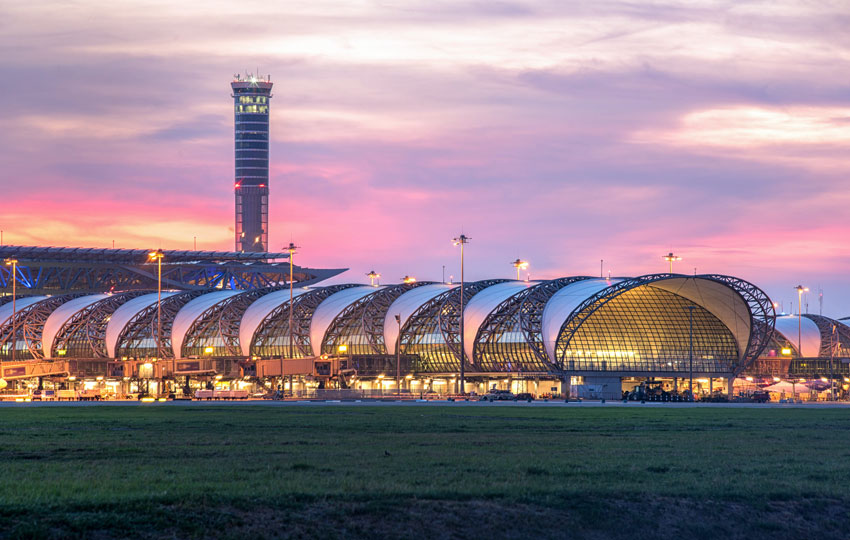
8 questions travelers should ask before visiting Thailand in 2022
TripFalcon August 05, 2022
Last Update: 2023-12-31 20:21:48Like a Bangkok 7-Eleven, Thailand is open and ready for your visit.
In July, the country officially did away with nearly all travel restrictions and virus containment measures. Already this year 2 million people have visited Thailand, with the government expecting a total of 9.3 million by the end of the year. This is more than originally predicted, but it’s still a fraction of a pre-pandemic Thailand, such as in 2019 when nearly 40 million tourists visited the country. This lack of tourism has had a massive impact on the country’s economy, an estimated 12% of which stems from tourism.
Tourism is coming back to Thailand, but for the time being numbers are still low. Couple this with likewise diminutive hotel rates, and right now is a really, really excellent time to visit Thailand.
So what do you need to know before you go?
Introducing Thailand
1. What is needed to visit Thailand right now?
Thailand is pretty much fully open, although there are still a couple of small caveats. Quarantine has been scrapped, but visitors are still required to provide proof of vaccination upon arrival. Unvaccinated or partially vaccinated visitors must be able to show the negative results of a COVID-19 PCR or professional ATK test taken within 72 hours prior to departure. Upon arriving in Thailand, all travelers must undergo a body temperature check. And since July, wearing a mask is no longer obligatory in Thailand, except on some forms of public transportation.
2. What’s the airport situation?
Although a resurgence of domestic travel in early June saw some stress on Thailand’s airports, unlike the chaos unfolding this summer in many of Europe’s airports, in Thailand, things are stable. Currently, Suvarnabhumi International Airport, the country’s main hub, is receiving nearly 30,000 passengers per day, a scant fraction of the 108,500 passengers the airport saw per day in 2019. Yet it appears that the government is confident these numbers are yet again possible; an ambitious extension, set to be finished in 2025, will increase the capability of Suvarnabhumi by 15 million passengers.
Domestic flights at points across Thailand are also picking up again, and since July, food and drink can yet again be served and consumed on domestic flights.
3. Any new ways of getting around?
While the rest of Bangkok was locked down, its civil engineers were busy expanding its metro and monorail network, meaning that it’s easier than ever to get around the notoriously gridlocked city. There’s even now a handy train connecting the city and Don Mueang International Airport, Bangkok’s budget and domestic air hub. The so-called Red Line train terminates at the shiny new Bang Sue Grand Station, which recently took over as the country’s main rail station. Additionally, for those who have their sights set abroad, there are plans for a high-speed rail link that would connect Bangkok and southern China, via Laos, by 2028.
4. And what about the accommodation situation?
Unlike many destinations around the world this summer, there’s no lack of places to stay in Thailand. And at press time, visitors could expect to find exceptionally good value accommodation in the country’s larger destinations – Bangkok, Phuket, Krabi and Ko Samui. The only potential hitch is that the Thai government is currently proposing a dual-tariff hotel structure. In this system, foreign visitors would have to pay pre-pandemic (that is, more expensive) costs for hotel rooms while locals would continue to pay the reduced, government-subsidized rates. Some local hotel associations have expressed their opposition to the proposal, and existent dual-pricing schemes have previously garnered negative attention in Thailand, so it’s possible that the government may back away from this plan, to the sigh of relief of many vacation planners.
5. What should I book in advance?
It’s always a good idea – and a good value – to book accommodation in advance. And with disruptions in air travel over the last couple of years have led to fewer departures overall, booking domestic flights in advance is also recommended. What you also may want to consider booking ahead for is dinner. In contrast to its street food reputation, in the last few years, Bangkok has become home to several upscale restaurants with lengthy waiting lists. If you want to have a special meal at a lauded eatery such as Sorn, Samrub Samrub Thai or Jay Fai, prime your laptop and send that email at least a couple months in advance.
6. What’s this talk of a tourist fee?
Since January, the Thai government has been pitching the idea that all foreign visitors to Thailand pay 300 baht (approximately US$8) for obligatory tourism insurance. The government proposes that the fee be tacked onto airline tickets and that neither foreign residents nor diplomats will be exempt from paying it. If included this way, it’s likely that many visitors would not even notice the fee, but dual-pricing opponents have already voiced their opposition to the proposal, and it has yet to be approved by the government.
7. What about traveling around the region?
Since May, Thailand and its neighbors have agreed to reopen their land borders. And with Laos and Cambodia also having scrapped quarantines, this means that it’s once again possible to cross the region by land, so after you’ve done Thailand, why not consider tacking on a visit to a practically tourist-free Angkor Wat?
When to go to the Similan Islands, Thailand
8. Will Maya Bay be open?
If you’re a fan of the 2000 film The Beach – or of beautiful places in general – you probably want to visit Maya Bay. An almost impossibly picturesque tropical cove that is part of Hat Noppharat Thara-Mu Ko Phi Phi National Park, in southern Thailand’s Krabi Province. At its peak of popularity in 2018, it’s estimated that as many as 6000 people were rolling into Maya Bay every day. Visitors left behind rubbish, damaged plants and sand, spooked animals, and boat anchors are thought to have destroyed as much as 50% of the bay’s coral. In response to this, in 2018, park officials abruptly closed the bay. In the time since, the environment in the bay has bounced back, and officials have installed a more responsible and controlled tourist infrastructure. In January, Maya Bay was reopened after more than three years, but officials have decided to close it again, from August to September, to yet again give the environment a chance to rest. Will it be open late this year, in time for peak tourist season? Most likely yes – it’s a massive draw – but you can count on officials maintaining new rules that require visitors to book their visits in advance, and that limit the amount of visitors each day, the time they spend in the bay and what they can do there.

